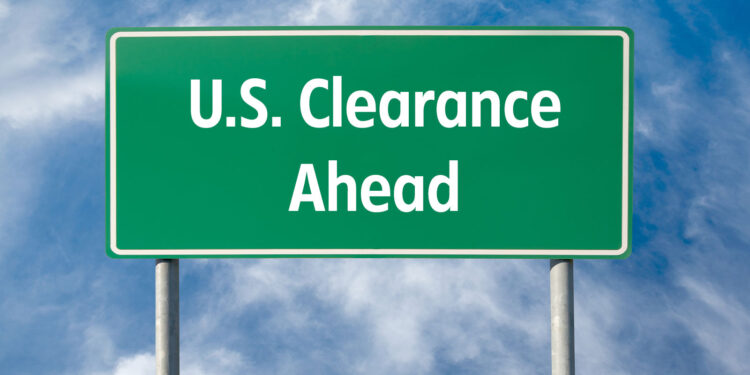Permissions for Non-U.S. Charter Flights to the U.S. – Part 2: Additional Considerations

This business aviation blog post continues from our article last week, entitled “Permissions for Non-U.S. Charter Flights to the U.S. – Part 1: General Requirements.”
There are only rare cases where the Department of Transportation (DOT) actually notifies operators on required permissions and procedures for operating non-U.S. aircraft on charters (non-scheduled commercial) to the U.S. However, in the end it’s always up to the operator to be aware of the assorted and specific operating requirements. Customs, Border and Protection (CBP), in practice, generally only checks for cabotage issues, by way of Permits to Proceed, and doesn’t get involved with review or enforcement of DOT exemptions.
The following is an overview of what you need to know:
1. Customs bonds
All foreign-registered charters operating to/from the U.S. require customs bonds. While bond processing time tends to vary, it takes on average 30 days to set up and register a customs bond. Trip support and other third-providers may be used to obtain lists of customs brokers that can used in the U.S., but they aren’t part of the process. Some providers allow operators to use their own customs bond. This, however, is not standard practice and certain airport authorities do not permit operators to utilize 3rd-party bonds.
Best practice is to obtain your customs bond in an amount no less than $100,000 USD, as this is the minimum required by some local airport authorities. Be aware that U.S. Customs authorities do not allow foreign-registered charter flights to land without appropriate and valid customs bonds.
2. Carrier codes and Master Crew Lists
If you do not already have a carrier code you’ll need to submit an application via an advance passenger information system (APIS) account manager. APIS account managers operate during normal business hours, and it’s best to allow yourself 48 hours lead time for this. Third-party providers can facilitate carrier code application requests, assuming all required information is provided. Meanwhile, all active crew must be listed on a Master Crew List (MCL), filed either directly with the Transportation Safety Administration (TSA) or online via a 3rd-party provider. Once MCL crew information is submitted it usually takes about 24 hours for TSA to vet and approve a crewmember on the MCL. Note that any changes to crew information needs to also be updated on the MCL list with TSA.
3. Special interest countries
Special Federal Aviation Administration (FAA) routing authority is needed for operators flying to/from and within the U.S. with aircraft registered to China, Russia, Cuba, North Korea, Syria, Sudan and Libya. This routing authority is processed by the Systems Operations Support Center (SOSC) office at the FAA (open 24 hours) and normally requires 24-72 hours lead time. Any requested changes to an approved routing also require 24-72 hours lead time. When an applicable flight plan is filed, the route used must be what was approved by the SOSC office or there will be repercussions, administered on a case-by-case basis. The crew may receive a warning, the aircraft may be escorted to the ground and/or the operator may be fined. More information on this approval can be found on our article titled “What You Need to Know about FAA Special-Route Clearances.”
4. Visa waiver program options
Foreign charter operators authorized under the Visa Waiver Program (VWP), as authorized carriers, may transport passengers of certain nationalities to the U.S. without visas. This program allows foreign registered charter (non-scheduled commercial) operators, but not private non-revenue operators, to carry passengers with Electronic System for Travel Authorization (ESTA). ESTA is an automated system that determines eligibility of visitors to travel to the U.S. under the VWP. The process to quality as a VWP authorized carrier takes about 30 business days and is requested via the Department of Homeland Security. This authorization, once obtained, is valid for seven years. To become a VWP carrier you’ll need to provide operator name, title of the person completing the form and either a customs bond number or a U.S. tax ID number. More information can be found by reading about the VWP program on our blog.
5. Permits to proceed
Charter operators of non-U.S. registered aircraft require Permits to Proceed, from Customs, Border and Protection (CBP), to travel from one airport to another within the U.S. The purpose of this is to control cabotage – picking up passengers in the U.S. and transporting them to another destination within the U.S. In most cases, Permits to Proceed are issued by CBP on the day of operation, to confirm that the people notified to be onboard are actually onboard. To obtain a Permit to Proceed you’ll need to submit a form to customs along with a general declaration. CBP will then stamp one or both of these documents. Charter operators of non-U.S. registered aircraft should carry a copy of their permit onboard, for each port they travel to.
Conclusion
Always ensure that you have sufficient lead time to obtain needed permissions and to assemble all required support documentation when planning charter operations to the U.S. Your trip support provider can assist in determining exactly what the current requirements are and what permissions you’ll need for your particular trip.
Questions?
If you have any questions about this article or would like assistance obtaining your needing permissions for the U.S., contact me at juanmuniz@univ-wea.com.



